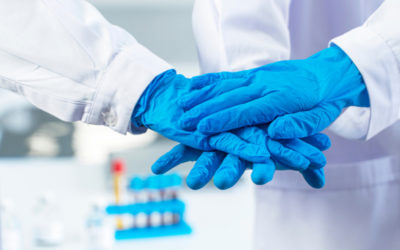New drug modalities, including oligonucleotides, bispecific antibodies, prodrugs, cell and gene therapies, and fusion proteins, offer new ways to treat human diseases once considered "untreatable." Cell and gene therapies have been around for years, but advancing...
Technical Expertise
ICH M10: Preview New Bioanalytical Method Validation Guidance
The International Council for Harmonization of Technical Requirements for Pharmaceuticals for Human Use (ICH) is in the process of revising M10, a multidisciplinary guideline that governs bioanalytical method validation. Drugs need to contain the correct...
Pathologists Can Move Your Drug Development Program Forward
Pathologists examine the causes and mechanisms of diseases and, in the world of drug development, that means collecting, processing and analyzing tissue for toxicity. Histotechnologists fix tissue samples onto slides, stain them to distinguish types of cells and cell...
WuXi AppTec Grows Biomarker Capabilities with Quanterix
The newest partnership between Quanterix and WuXi AppTec Laboratory Testing Division (LTD) integrates industry-leading instruments and reagents with world-class laboratory and technical staff to form the co-developed Simoa Joint Lab in Shanghai. Starting in 2021, drug...
How DMPK Lead Optimization Mitigates Risk and Conserves Resources
Lead optimization in the world of drug development is a multifaceted process. It is a crucial part of discovery pharmacology and toxicology, as such, is used to identify and advance the most promising drug compounds. First and foremost, lead optimization aims to...
5 Questions When Planning a Nonclinical Toxicology Program for Biotherapeutics
Encountering challenges while developing a new drug is expected, but drug developers who understand the pitfalls are often better prepared to navigate them and emerge successfully. Nonclinical safety assessment is a highly complex and molecule-specific process, but...
Virtual Tours Available Today
Explore our New Jersey facilities from wherever you are working, even the comfort of your own home. Virtually tour our New Jersey facilities in Cranbury and Plainsboro to learn about our Bioanalytical and DMPK capabilities and instrumentation to support your drug...
Transitioning to Phase I Clinical Trials
Developing biologic solutions is a complex process, and bridging bioanalytical assays from preclinical to phase I clinical trials is a demanding step in advancing your therapeutic. While maneuvering through regulatory requirements and intensive testing, it is easy for...
Dual Filing your IND Package: Planning Pays Off
Navigating the Investigational New Drug (IND) submission process for your drug development program can be a complex process, especially when filing with various regulatory agencies and pursuing multiple markets. However, dual, or globally filing an IND package can...
ACT Annual Meeting: Managing Roadblocks to Success
One of the largest shares of preclinical testing in any drug development program is toxicology studies, yet bringing together the community supporting this pivotal development stage does not happen often enough. Fortunately, the 2020 American College of Toxicology...
Ramp Up: What Drug Developers Need to Know
Many drug development companies are prepared to move their programs forward and effectively submit preclinical packages to regulatory bodies. In the challenging business of drug development, disruptions and obstacles are elements that must be part of the conversation...
In the News: The IND Application, Timelines & Advice for Small Drug Developers
Recently our WuXi AppTec subject matter experts contributed to notable publications. Below is a quick recap of where to find them sharing their knowledge, advice and passion for drug development. Pharma Manufacturing Keys to Submitting a Successful IND Application to...











